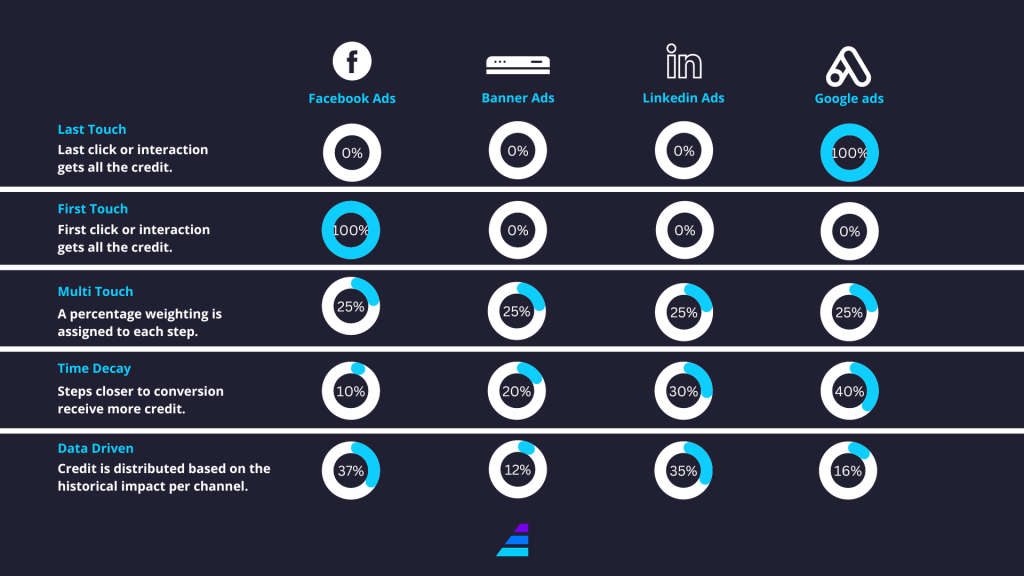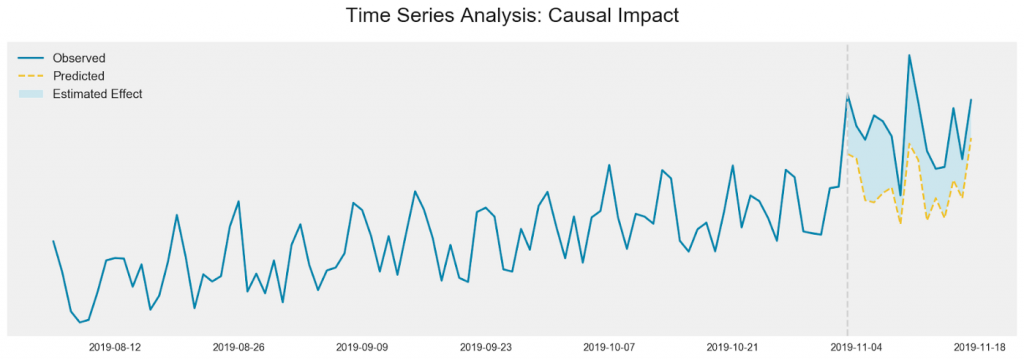Using Analytics To Improve Customer Acquisition
Every business is looking to leverage digital channels to find new customers and users, but competition is fierce! The secret weapon to winning the traffic bidding war? Your own data!
Gone are the days when marketing campaigns take months to research and execute, then months to gather ratings and sales figures, then months to analyse and reiterate. Now companies receive instant feedback on digital channels and are able to optimise on the fly. Meta, Twitter, TikTok and Google all use powerful algorithms to automate this process in real time, making sure the best ad copies are shown to the most relevant audience hence increasing return on your marketing spend.
Now you may ask: if the oligopoly had it all figured out, do I need to do anything else? The answer is absolutely yes. If everyone uses the same powerful model, no one has a competitive advantage. The key is to help Google or any buying platform algorithms bring you the most desired customers by optimising your campaign.
But Which Metric to Optimise?
The most desired customers are those who return the highest lifetime values (LTV). Which metric defines value for your business? Number of app downloads, number of product or subscription purchases, or total sales amount? Choosing the right metric is important. If you run a freemium model and choose downloads as your optimiser, you might end up with more users who will never convert to paid users. If you run a dating app and choose purchase as your goal, you will most likely end up with way more men than women. The key is to look into your historical data and model the impact of a range of KPIs. If you are a completely new startup, you can make this decision heuristically (a calculated guess) and improve as you gather more data.
The second challenge is timing. You cannot wait for a user’s ‘lifetime’ to send data back to google, Meta etc. The sooner your marketing channel receives these signals, the more effective your campaign will be. You can do this by predicting the lifetime value of a customer at the earliest interval based on, again, your historical data.
To give a very simple example, if you know your subscribers stay on average 3.5 months and your subscription costs $10 per month, then as soon as someone subscribes, you can predict this person to be worth ~$35.
The prediction model can get a lot more sophisticated. For example, you might already know that iOS users have a higher propensity to convert. Therefore you can infer LTV at the point of download by Estimated LTV
(Estimated Conversion Rate). In fact, you can use all the information you have on existing users, including personal settings and behavioural patterns, to build the model and predict for each new user as soon as you have enough information. Keep in mind though that there could be more than one type of desired customer for your business.
By using your own data you can begin to build models which estimate the lifetime value of customers, giving you a clear indication of where to optimise your campaign. And as you feed more data into that model, it will become smarter and smarter.
Attribution Modelling
Once you have a clearer picture of which audience to target and optimise your campaigns towards LTV, the next step is to tackle attribution.
Attribution is the process of assigning core business entities (e.g. users, orders, leads, etc.) to a marketing provenance, (e.g. source, campaign, ad, placement, etc.). While all marketing channels have some form of attribution built in, if you are using multiple platforms it is quite likely you will have issues with duplicated conversions across channels.
All marketing channels are greedy. Everyone wants to claim credits for their own. If a prospecting user saw and clicked on a Facebook video ad, then a few days later Googled your product, clicked on a Google Ad and purchased, both Facebook and Google will claim this user as a conversion for itself. In essence, you paid twice for the same user. You want to be able to attribute this user fairly and optimise your budget across all channels.
But what is a “fair” attribution model? By default, companies apply a last-click policy. This tends to favour channels closer to the conversion point. In the above example, Google will get all the credit. In reality, it is the Facebook video that made the first and probably most impact. In the image below we give a quick overview on the different attribution methods and their impact on who would get credit.

In order to have solid attribution mechanisms that do not suffer from privacy gaps, you need to ensure your attribution is moved back to your first party data. What that effectively means is that you should be able to link your core internal ids (e.g. user_id, order_id, lead_id) to the marketing activity that resulted in its acquisition.
By doing this you can easily de-duplicate leads and understand the long-term ROI impact of different channels, campaigns and creatives.
Offline Channels
What about non-digital channels? They also have a big impact on your customer journey. Are you able to measure it? The answer is yes, you can estimate the impact.
While we won’t go into Causal Impact in detail, the image below demonstrates the concept in a nutshell.
To estimate the impact of an event at a point in time for a single time series, you can start by predicting what would have happened without this event, aka the offline campaign. It is a relatively simple forecasting model based on historical data. Once you have the forecast, the difference between what would have happened and what actually happened is the estimated effect of this campaign.

Organic Traffic
If you are the lucky few with lots of media attention or amazing word-of-mouth from a very sticky core customer base, you may not rely as heavily on performance marketing to bring in new customers. In this case, analysing traffic sources is still important.
It can help:
- Evaluate the effectiveness of media sources and influencers.
- Identify partnership opportunities.
- Better understand your ‘power users’ and encourage them to champion your product, e.g. optimised referral scheme.
- Identify the characteristics of high-LTV customers and work on campaigns to attract more of them.
Audience Selection
There are many ways to define your target audience(s). On one side of the spectrum, you could leave everything to external platform algorithms: select your market, set bidding rules, add your creatives, click run and let Meta or Google optimise on their side. Another strategy is to create audience groups based on your existing user behaviour and tailor marketing materials.
For example, if you are a chat app and one of your analysts discovered that your most engaged users are of Gen Z and their favourite feature is sharing Spotify playlists. From this insight you might consider creating a campaign targeting the age group between 18 and 25, under the ‘music lovers’ category, with a campaign designed around the share playlist feature.
Which is the better approach? Let data guide you to it. Test various buying strategies and compare performance results.
Conclusion
Nobody knows your customers as well as you do. Your first party data is a treasure trove of useful information. When properly analysed, it can help you identify the right customers, optimise your campaigns and improve their entire customer journey, all whilst being privacy friendly.
If you’d like to know more about marketing analytics, why not get in touch with a friendly member of our team?


